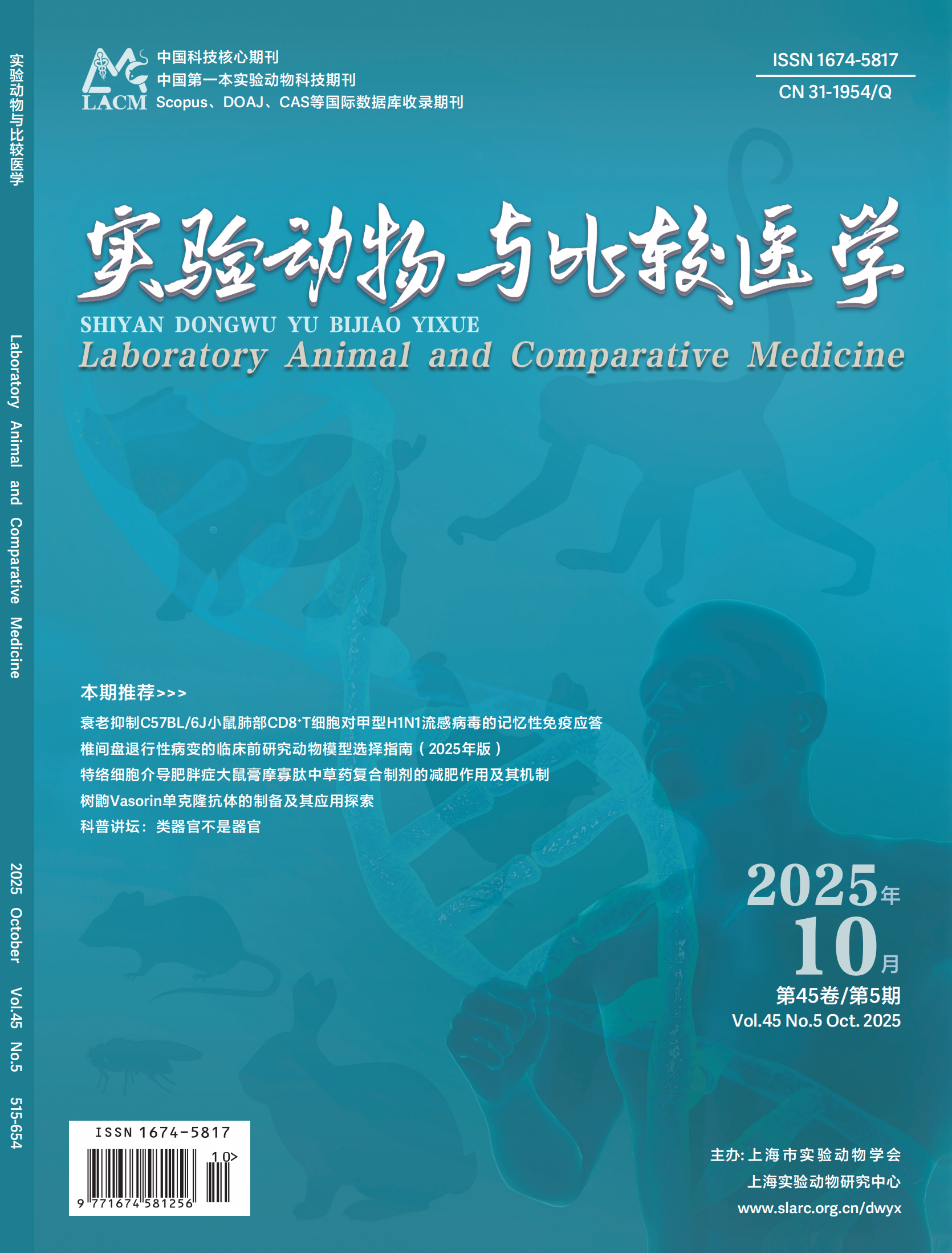Objective To compare and explore the histopathological and ultrastructural characteristics of the olfactory bulb in 6- and 12-month-old APP/PS1 double-transgenic mice and their spatial learning and memory ability, as well as the effects of memantine intervention.Methods Three-month-old SPF male APP/PS1 mice were randomly divided into 6- and 12-month-old model groups (named 6-APP/PS1 group and 12-APP/PS1 group, respectively) and memantine (MEM) groups (named 6-MEM group and 12-MEM group, respectively, the dose of MEM was 2.60 mg/kg/d), with 10 mice in each group. Age-matched C57BL/6 mice were used as the blank controls. The mice in the MEM groups were continuously administered MEM (from 3 months and 9 months, respectively) by gavage for 3 months, and the mice in the non-MEM group received equal volume of pure water for 3 months. The Morris water maze test was used to assess spatial learning and memory ability of those mice at 6 months and 12 months of age. After hematoxylin-eosin staining, the pathological morphology of the olfactory bulb was observed under an optical microscope, and the ultrastructure of the olfactory bulb was observed under a transmission electron microscope.Results The results of the water maze test revealed that the crossing numbers and the time spent in the target quadrant were significantly decreased in the 6-APP/PS1 and 12-APP/PS1 groups compared with the blank control group of the same age (all P < 0.05), whereas the 12-APP/PS1 group showed a more significant decrease than the 6-APP/PS1 group (both P < 0.05). Compared with the non-MEM group, the two parameters of the MEM treatment groups increased significantly (all P < 0.05). Histopathological observation showed that, compared with the age-matched blank group, the nerve cells in the olfactory bulb had no obvious atrophy and deformation, and the number of mitral cells was significantly reduced in the 6-APP/PS1 group (P < 0.05), while the nerve cells in the olfactory bulb were atrophic and deformed, and the number of periglomerular cells and mitral cells were significantly reduced in the 12-APP/PS1 group (all P < 0.05). Compared with the non-MEM group, the number of mitral cells were significantly increased in the 6-APP/PS1 group (P < 0.05), but there was no significant difference in the number of periglomerular cells and mitral cells in the 12-MEM group (all P > 0.05). Ultrastructural observation showed that, compared with the blank control group, the synaptic structure was swollen in the 6-APP/PS1 and 12-APP/PS1 groups, the thickness of the postsynaptic density was reduced and the number of asymmetric synapses decreased in the 6-APP/PS1 group, while the thickness of the postsynaptic density and the number of asymmetric synapses could not be observed clearly in the 12-APP/PS1 group. Compared with the non-MEM group, the synaptic swelling in the 6-MEM group was significantly improved, the thickness of the postsynaptic density and the number of asymmetric synapses increased, but the synaptic swelling in the 12-MEM group was not significantly improved, and the thickness of the postsynaptic density and the number of asymmetric synapses could not be observed.Conclusion Changes in the pathology and synaptic ultrastructural morphology of the olfactory bulbs in the APP/PS1 mice correlated with age, accompanied by behavioral alterations. MEM intervention not only improved spatial memory ability in the APP/PS1 mice, but also increased the number of mitral cells and alleviated the damage to the synaptic structure in the 6-APP/PS1 group, with significant improvement in early intervention.

